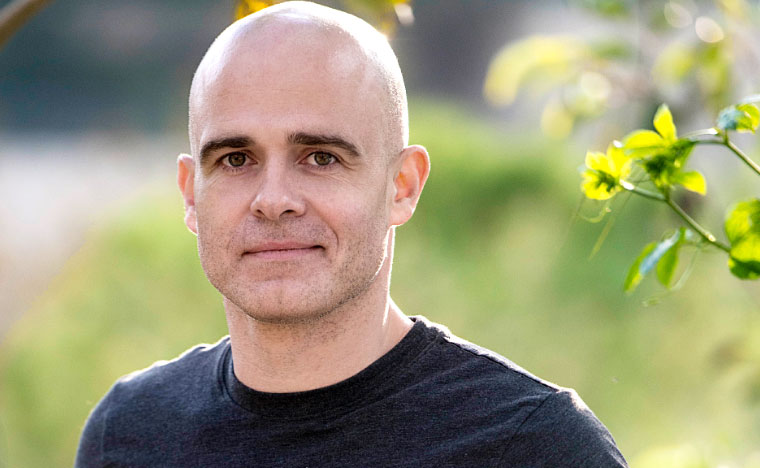CEO Spotlight: Lightricks CEO Zeev Farbman on the Evolution of the Creator Economy

For all the hype surrounding “the creator economy,” it’s a relatively new phenomenon, and even the multinational companies that have the most skin in the game are still trying to figure out where it’s all headed. In this sense, Zeev Farbman, co-founder, and CEO of Lightricks, is the exception.
Digital content creators have been able to earn a living since the rise of the internet, but many of the factors that make the creator economy what it is today have only been in play since 2020. With social distancing regulations in place, locked-down creators doubled down on posting original content and engaging with their audiences. As people’s values have changed, The Great Resignation has seen a shift towards self-employment, and with trust in companies diving, marketers have found increasing success tapping into the authenticity of influencers.
Founded in 2013 and today operating in high-growth mode following a $130 million Series D round with a $1.8 billion evaluation, Lightricks has made a name for itself as a developer of massively popular apps that help people to bring their visual content ideas to life. To date, the company’s products, which include Facetune, Videoleap, Beatleap and Filtertune, have been downloaded over 500 million times.
We reached out to Farbman to get his take on what the future has in store for the creator economy and what creators need in order to thrive.
- For all the hype around the creator economy, industry data suggests that only the biggest creators are able to earn a living from their work. Do you see empowering the “middle class” of content creators as important?
Zeev Farbman: We are working to lower the entry bar for creators, giving all creators access to our tools and services, and providing opportunities for them to quickly and easily connect with platforms or brands looking to collaborate on unique campaigns. We embrace the idea that anyone can be a creator, and strive to make our apps and services accessible to all creators across the spectrum.
The creator economy is rapidly evolving before our eyes, and things are going to change drastically – especially with everything related to medium, and even small, creators. Influencer marketing is expected to reach some $15 billion in revenue during 2022, and marketeers are looking to work with the creators who have 100,000 followers or less.
What this means is that a new era is emerging for the middle class of content creators, but there are still obstacles to overcome – especially questions of scale, which we at Lightricks are looking to overcome with new and innovative technologies.
Before 2020, the bigger influencers with massive followings on TikTok, Instagram or YouTube received most of the attention, but with the rapid creation, growth of complexity of online content in just the last two years, the market has opened up and offers great opportunity for those creators with smaller, loyal followers.
Empowering these growing, mid-sized creators is highly important, as this larger pool of creators will benefit by marketing their unique skills, talents and passions through photo and video content and more easily monetize through partnerships and brand campaigns.
- As an executive leader at a high-growth unicorn startup, your job encompasses so many things. What aspects of being a CEO are most important to you personally, and how do you balance it all?
Zeev Farbman: The day-to-day life of a CEO is different in a startup composed of five friends, a company of 50 working in the same building, and a company of 600 spread in four different countries and multiple time zones. And yet, the sense of excitement when something that was merely an idea becomes reality always remains the same, and it’s one of the most important things for me to see as a CEO.
Also, as a large company, I want every employee at Lightricks to feel like they are in a small startup, where their thoughts, ideas and work all matter and make a difference – whether it’s by altering our roadmap, releasing a cool new feature to our users, or directing a successful new ad.
Lightricks is a company looking to enable creativity, create magic and bring ideas to life for millions and millions of people around the world, and I view that as part of our internal DNA too. To me, it is super important that the people behind the product are enjoying their journeys as well. When your employees can fully express themselves and use their strengths in a way that helps everyone, things run better and smoother.
- For its first several years of existence, Lightricks was in the business of developing apps that make it easier for content creators to bring their ideas to life. Now it looks like you’ve pivoted to a broader perspective on serving the needs of the creator economy. What prompted that pivot, and where is it all leading?
Zeev Farbman: At Lightricks, we always enjoyed seeing how creative people use our tools. However, in recent years we saw these people’s mindset shift from amature or hobby towards more professional creators.
For instance, our user research taught us that while three years ago, 75% used our apps for friends and family, and only 25% viewed their creations as a source of income, today that has completely changed. Now, 75% of our users want to monetize their creative content, and only 25% use the apps as a friends and family hobby.
Now we want to continue to provide these creators with whatever tools and services they need as they drive the creator economy forward. We already had the creators engaged within our apps, and now it was about also helping and guiding them through the funnel, from creation to monetization.
The next step was finding a way to offer creators more monetization opportunities and how to support them. In March, we acquired Chicago-based Popular Pays, a platform that facilitates the collaboration between creators and brands on marketing and brand campaigns. This is the first step in our strategy to support and enable creators to reach their potential and monetize their talents and content.
The result is a platform that brings together our advanced tools and monetization opportunities for creators and gives brands access to the largest community of content creators across the globe. Our goal is to eventually integrate the platform directly with our apps, allowing creators to easily market their content while offering brands direct access to all the types of creators and content they are looking for.
- As influencer marketing matures, the industry is seeing continued growth in demand for great content generated and shared by creators. What key trends are you keeping your eyes on when it comes to the supply side – the community of creators?
Zeev Farbman: When we first introduced Facetune in 2013, social media was just embracing the power of the image and presenting the most impactful content that exemplified a creator’s passion, humor or artistry.
There are many trends worth tracking today, but two interest us a lot. The first is the increased use of short-form video, which is much harder to create than photo edits. As a result, creators are looking for insight from other creators on how best to leverage format or artistic effects to do so in their own content.
The second is creators understanding they can turn their hobby into a source of income, and as a result, they have new needs revolving around those monetization efforts.
- Over the past two or so years, all the big social platforms seem to be investing aggressively in launching tools and monetization channels aimed at content creators specifically. What do you think prompted this priority shift, and do you see it continuing?
Zeev Farbman: As the creator economy has evolved, it’s become clear that creators are the engagement drivers for the social media platforms. This has caused many interesting changes in the way both sides operate. Creators want to monetize their work, to be compensated for the value they give the platforms. At the same time, platforms want to ensure the creators stay on their network. so that the rest of the users get value from their browsing.
So yes, YouTube, Facebook, Twitter, TikTok and others are all playing the game, and we at Lightricks are prioritizing alignment with the interests of the creators, including the smaller and middle-sized ones. They can use our tools to export content to any platform they choose (at times, more than one), and we continue to build and provide them new and exciting monetization opportunities, so they can do what they do best – create exciting and engaging content.
Have you read?
Where Has All The Value Gone by Bryan Gray.
Is your Board stimulating or stifling innovation by Rosie Yeo.
When It Comes to Business During Chaos, Only the Resilient Survive by Rhett Power.
Entrepreneur Trevor Edwards: How Collaboration Leads to Success.
Everything You Need to Know About Adrien Rappoport.
Add CEOWORLD magazine to your Google News feed.
Follow CEOWORLD magazine headlines on: Google News, LinkedIn, Twitter, and Facebook.
Copyright 2024 The CEOWORLD magazine. All rights reserved. This material (and any extract from it) must not be copied, redistributed or placed on any website, without CEOWORLD magazine' prior written consent. For media queries, please contact: info@ceoworld.biz








